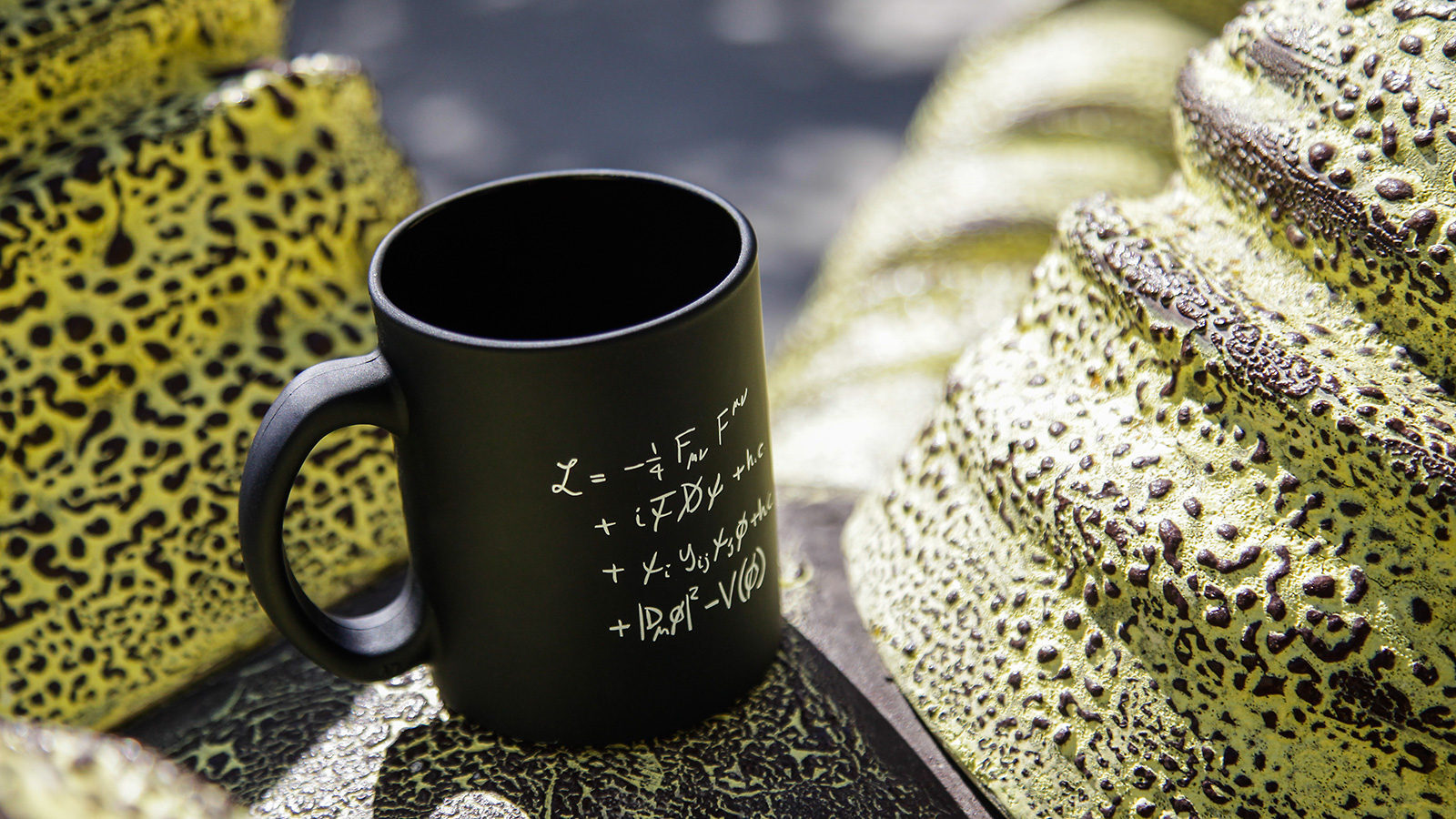The Standard Model of quantum physics. A look "under the hood".
By way of commentary: When I was in high school I was very frustrated by the fact that chemistry seemed like a random hodgepodge that didn't fit together in a nice, perfect, consistent manner like mathematics. What I didn't understand at the time, is that the true description of how chemistry works is quantum physics, and that everything in the chemistry books is just useful approximations of the results from quantum physics, that people have discovered over the centuries. I find now studying chemistry is much more worthwhile, now that I'm going into the subject with the mindset that what I'm learning is a collection of useful approximations of quantum physics, which is largely intractable.
On the subject of quantum physics, what most of us usually see those "Standard Model" particle tables that are done in the style of the periodic table of the elements from chemistry, but again we don't see the actual quantum physics equations behind it. Why doesn't anyone every show us the actual Standard Model equations? Physicists just seem to pull all kinds of principles and effects and assorted magic out of nowhere without showing us the Standard Model equations that it all comes from.
Well, first of all, it's "equation", singular -- just one -- and once you see it, you'll see why people haven't been showing it to you. It's really, really big, it's a differential equation (partial differential equation), which most people don't understand, but even if you do, it's hard to have any intuition as to how a differential equation behaves once it goes beyond 2 or 3 simple terms (at least that is the case for me), and it's full of greek letters and other funky mathematical notation.
And remember, the Standard Model is only half of reality (or what we know of it) -- the other half is general relativity, which isn't represented in this equation.
The deconstructed Standard Model equation | symmetry magazine

There are no comments yet.